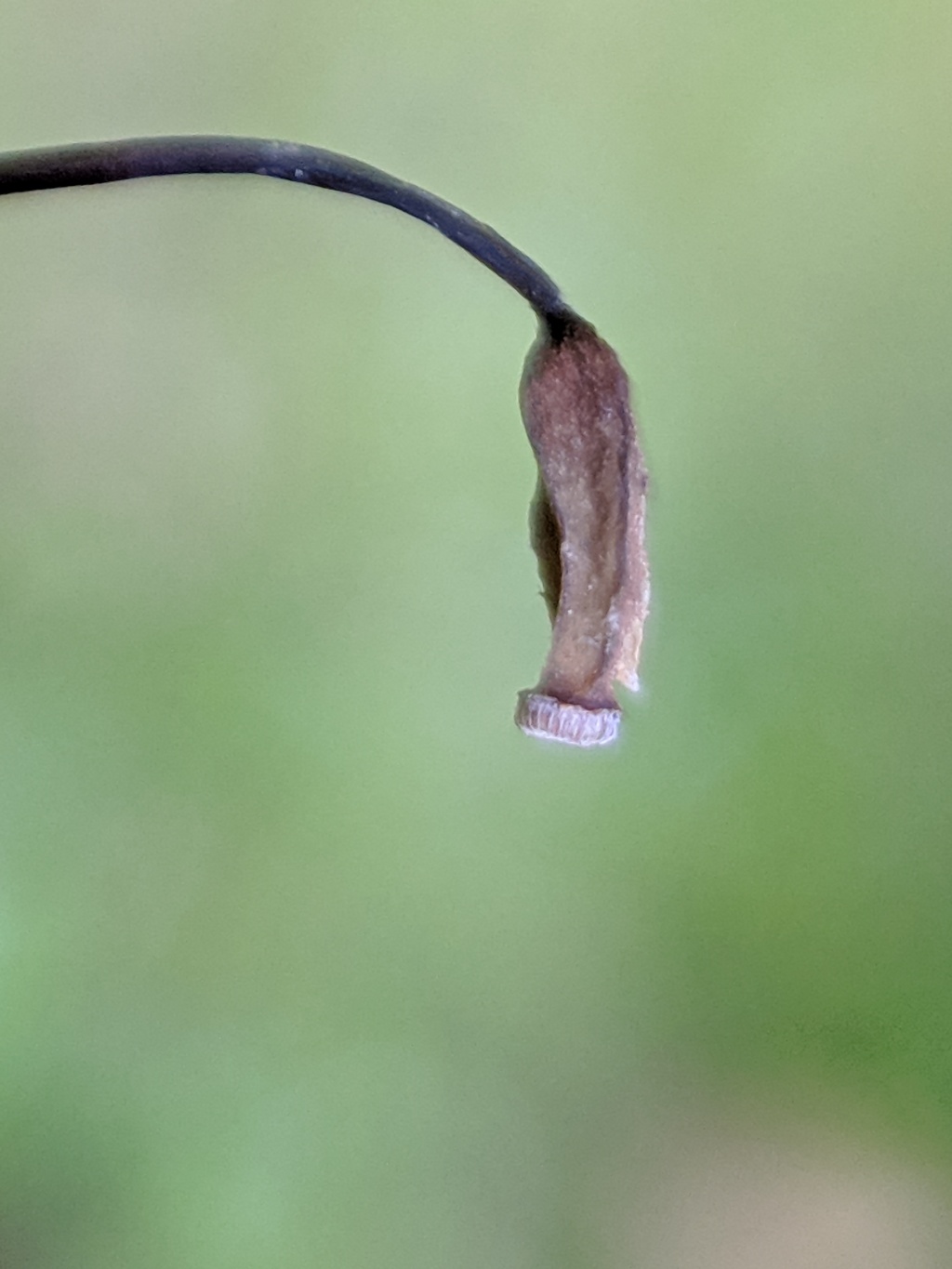Pogonatum
Dioicous. Loose tufts or gregarious single stems, sometimes on a persistent protonema (not in Victoria). Aerial stems simple, rarely branched by innovation, with rhizoids restricted to stem base and bases of lowermost scale-like leaves. Leaves scale-like at base, becoming larger toward stem apex, lanceolate or linear-lanceolate, from a clearly sheathing base, erect- to wide-spreading when moist, erect, appressed, crisped or contorted, or with apex incurved when dry, with most of adaxial surface covered with lamellae, rarely restricted to near costa (not in Victoria) or without lamellae (not in Victoria); lamellae 1–12 cells tall; apex acute or obtuse; costa subpercurrent, percurrent or excurrent; margin serrate, dentate (not in Victoria) or entire (not in Victoria), plane to upcurved, uni-, bi- (not in Victoria) or multistratose (not in Victoria); laminal cells subquadrate, hexagonal or rectangular, more elongate in sheathing base, smooth or rarely papillose (not in Victoria). Capsule erect or inclined, symmetric or nearly so, ovoid or short-cylindric, terete to faintly plicate with 4 or more edges, without stomata. Calyptra cucullate, densely hairy. Operculum rostrate. Peristome of 32 teeth, tightly fused at tips to epiphragm.
53 species spread throughout all continents except Antarctica (Hyvönen 1989; Bell et al. 2017); two species in Victoria.
 Spinning
SpinningBell, N.E.; Hyvönen, J.; Yao, K.-Y.; Ma, W.-Z. (2017). Description and phylogenetic investigation of Pogonatum shevockii N.E.Bell & Hyvönen (Polytrichaceae), a new East Asian species with a unique leaf morphology. Journal of Bryology 39: 235–246.
Hyvönen, J. (1989). A synopsis of genus Pogonatum (Polytrichaceae, Musci). Acta Botanica Fennica 138: 1–87.

